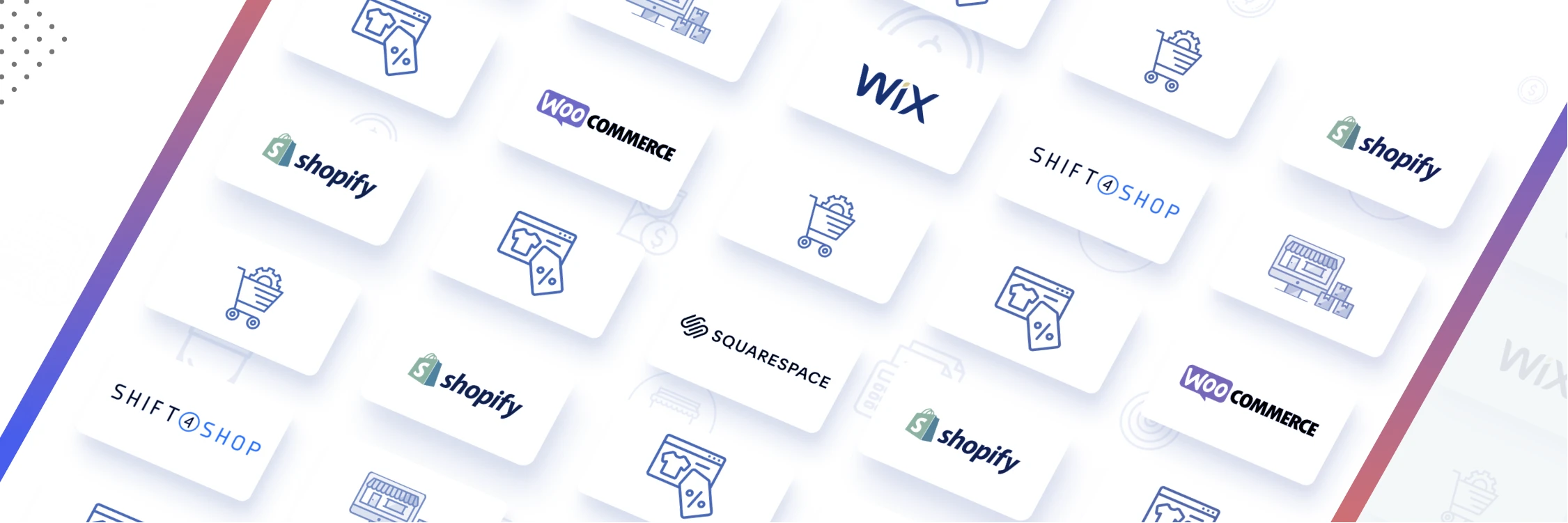
4 Struggles New Ecommerce Sellers Face — and How to Overcome Them
Contents
There’s no doubt that ecommerce’s share of the retail market is steadily growing. With the COVID-19 pandemic, ecommerce has only become even more essential, so it’s a good time to get in the game. Regardless, there are still struggles that any new online merchant is likely to face.
In this post, we’re covering five of the most common struggles new ecommerce sellers face, as well as the steps that you can take to make sure your budding brand isn’t dead on arrival. Read on to find out what the best new brands do to gain relevance, grow recognition, and build a loyal customer base that’s always growing.
Problem: Overcoming the Lack of Brand Recognition
What’s most ecommerce retailers’ problem coming right out the gates? Brand recognition. Let’s say you have a genius idea for a great product or amazing service solution. Unless potential customers or clients are aware of it, you don’t have much of a chance to get off the ground.
Building brand recognition can be hard. Customers often won’t complete purchases from brands they’re unfamiliar with, and it can be hard to gain familiarity if people don’t purchase your products. It’s a conundrum that leaves many small business owners scratching their heads. Luckily, this contemporary problem has a contemporary solution.
>>Solution: Dominate social media
How do you build brand recognition? It’s no secret that 70% of the U.S. population has at least one social media profile. As the old adage goes, you have to spend money to make money. The key is spending it in the right place. You can start by flooding the right social media channels with your brand message. There are three ways that you can dominate socials:
- Set up pages for your brand: Facebook, Instagram, Twitter, even TikTok — ecommerce brands thrive on social media recognition. One of the fastest, cheapest, and most reliable ways to build your brand is to develop an organic following online.
- Snag some ads: Business is business after all. Take out a few ads and let the social media algorithms deliver them straight to your most likely future customers.
- Invest in influence: Social media influencers are one of the best ways to cash in on the trend toward native, natural ads. Younger generations aren’t big on billboards; their favorite small celebrity wearing your brand’s athletic wear, though? Priceless.
Problem: Gaining Consumer Confidence
The next problem you’re likely to face happens a little further down the sales funnel. Sure, customers might come to recognize your brand and see it often on their feeds, but they’re still not sure whether they can trust you. There’s a pretty big leap between browsing a brand’s online inventory and actually pulling out your credit card.
>>Solution: Shape the narrative
The best way to gain trust is to control the way that your brand is perceived by consumers. Customers value transparency; they don’t want to feel like they might risk getting ripped off by purchasing a product or service from your ecommerce store. There are two ways that you can control the narrative and tell your story:
- Tell your story: One option you have is to explain a little about yourself. You can include this in an “About” or “Our values” page.
- Maximum transparency: Customers should know exactly what it is they’re buying, right down to the ingredients. This is especially important for consumables, like online wellness and supplements brands.
Problem: Logistical Puzzles
Logistics are the lifeblood of any successful organization. Getting your goods shipped from A to B, and then to the customer, all while keeping a stocked warehouse and steady supply chain can be a huge hassle. This can also be a problem if you happen to become very successful very quickly — many smaller businesses struggle to keep up with sharp increases in demand.
>>Solution: Find the right partners
You don’t have to go it alone in your quest to handle your business’s logistics. There are tons of companies out there who are happy to help you connect with customers quickly and efficiently. Here are three of the most important aspects to consider:
- Production: If you make a physical product, like clothing or home decor, how will you produce these items? How much would it cost to have your products built on a larger scale?
- Delivery: What service will you use to deliver your goods to your customers? Will you offer multiple shipping options? You might consider contracting with an ecommerce logistics company to handle these questions.
- Customer satisfaction: What is your protocol for a customer who has a problem with a product? It’s important to have well-defined policies in place for ensuring that your customers remain satisfied with your products and service.
Problem: Long-term growing pains
Think of it this way: growing pains are actually a pretty good problem to have. It means that your business is up-and-coming, growing in profitability and reaching a wider audience of potential customers. Still, making sure you keep up your business’s standards even when catering to a larger audience can be a serious challenge for many smaller ecommerce businesses used to sending out just a few dozen orders a week.
>>Solution: Build a sustainable business model
Easier said than done, right? Still, the most important thing that you can do is create a detailed, informative action plan for your business. This usually involves writing up a formal business plan. Business plans can be useful for a few reasons: they give you a roadmap to success, outline the steps you plan on taking as your business grows, and present possible investors with a clear idea of how you will become a profitable enterprise.
Start by using professional business plan software to create a comprehensive and long-term sustainable plan. Then, expand from there, organizing your operation around the ideas that fuel your business plan. Make sure that you perform a careful assessment of your business’s finances along the way to ensure long-term growth.
Accounting automation software helps the financial assessment process. It gives you the power to scale your business by creating a streamlined accounting system and tracking your business’s performance. By investing in automation software early, you’ll save yourself hours and hours of manual data entry and avoid human errors—ensuring a streamlined process that can grow as quickly as your business does.
Ecommerce isn’t easy, but it can be a highly lucrative and rewarding line of business for small business owners and larger companies alike. By investing time, effort, and money into the right solutions to meet ecommerce challenges along the way, you’re sure to develop a successful online business.
Samantha Rupp holds a Bachelor of Science in Business Administration and is the managing editor for 365businesstips.com. She lives in San Diego, California and enjoys spending time on the beach, reading up on current industry trends, and traveling.
Parag is the founder and CEO of Webgility, automating ecommerce accounting and operations for 5000+ businesses. His vision is to empower SMBs, multichannel merchants, and wholesalers and help them scale through AI-powered automation.








